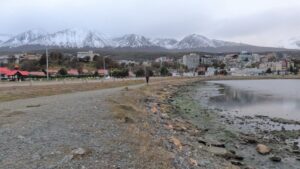
Ushuaia, Gateway to Tierra Del Fuego
Tierra del Fuego National Park is located at the southern tip of South America, primarily in the Argentine province of Tierra del Fuego. The park spans across a significant portion of the Isla Grande de Tierra del Fuego, the main island of the Tierra del Fuego archipelago. The island is shared between Argentina and Chile, but the majority of the national park is situated within the Argentine territory. The park’s southern border is adjacent to the city of Ushuaia, the southernmost city in the world, which serves as a gateway for visitors exploring the park’s natural beauty and rich history.
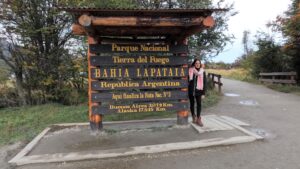
Parque Nacional Tierra del Fuego
Established in 1960, Tierra del Fuego National Park is one of the most remote and pristine natural areas on the planet. Covering an area of approximately 63,000 hectares, the park’s terrain is diverse, ranging from rugged mountains to dense forests, from serene lakes to winding rivers, and from peat bogs to windswept coastlines. The unique convergence of marine, forest, and mountain ecosystems within the park’s boundaries makes it a haven for biodiversity.
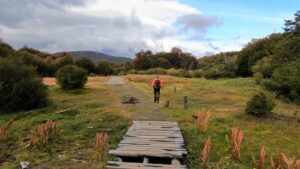
Peaceful Solitude Along the Trail
The park is home to an array of animal species, many of which are endemic to the region. Visitors might spot the iconic Andean fox, elusive South Andean deer, and the southern river otter, among others. Bird enthusiasts will delight in the presence of avian wonders such as the Magellanic woodpecker, the Chilean skua, and the black-browed albatross. The coastal waters surrounding the park are equally vibrant, serving as a migratory route for marine mammals like sea lions, elephant seals, and even the occasional orca.
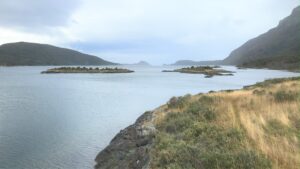
Bahia Lapataia
The park’s plant life is equally captivating. Lenga and coihue trees dominate the forested areas, while the southern beech is found at higher altitudes. The ground is adorned with a tapestry of vibrant mosses and lichens that thrive in the cool and moist climate. This rich vegetation, coupled with the diverse array of animal life, contributes to the park’s ecological significance, as it plays a vital role in maintaining the region’s delicate balance.

Bahia Ensenda Zaratiegui
Modern conservation efforts in the park prioritize a balance between preservation and responsible tourism. The park offers a range of activities for visitors, from hiking and birdwatching to kayaking and camping. This approach ensures that people can connect with the natural world while also learning about the history and significance of the area. Interpretive centers and guided tours shed light on the indigenous cultures that once thrived in the region, as well as the challenges of modern conservation.
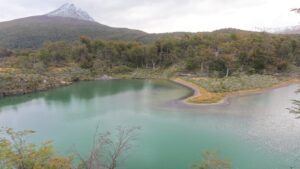
Lago Verde
In recent years, collaboration between Argentina and Chile has further strengthened the park’s conservation efforts. Both countries recognize the importance of shared stewardship in protecting this unique ecosystem. Cross-border initiatives have led to the implementation of joint conservation strategies and the promotion of sustainable tourism.
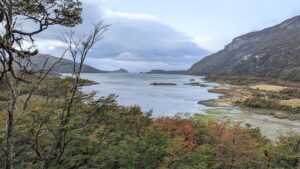
Lenga Forest on the West End of Bahia Lapataia
Tierra del Fuego National Park stands as a symbol of the awe-inspiring beauty and ecological significance of untouched wilderness. Its diverse landscapes, rich biodiversity, and cultural heritage make it a remarkable destination for both nature enthusiasts and adventure seekers. By preserving this remote haven, we ensure that future generations can continue to connect with the primal essence of nature and be inspired to protect and appreciate the fragile ecosystems that grace our planet.